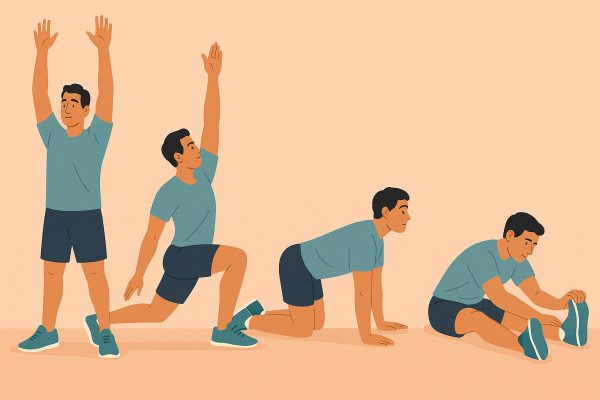Understanding What Wellness Means to You
Wellness doesn’t look the same for everyone. For one person, it may be a quiet walk each morning. For another, it could mean a blend of yoga, meal prepping, and journaling. The first step in building a plan is knowing what personal wellness looks and feels like for you.
Instead of copying someone else’s habits, take time to reflect on your own needs. What leaves you feeling balanced, rested, and clear-headed? Is it better sleep, more movement, or simply making space to breathe during your week numbers? This awareness helps shape a plan you can actually follow.
The more honest you are about your needs, the more realistic your goals will be. This isn’t about perfection. It’s about creating something you can return to week after week without feeling overwhelmed.
Creating Space in a Busy Schedule
One of the biggest challenges is making time for wellness in a full calendar. But the key isn’t cramming more in—it’s finding what you can shift or remove. Even a few minutes a day can make a big difference if they’re used with purpose.
Start by looking at your typical week. Notice where you feel drained or rushed. Then ask yourself what part of that time could be changed or softened. Maybe it’s moving bedtime a little earlier or stepping outside during a work break.
The goal is not to overhaul your entire schedule at once. Instead, it’s about planting small habits into open spaces where they’re more likely to grow. This creates momentum and builds trust in your routine.
Setting Goals That Feel Doable
Big goals might sound exciting, but smaller ones are what actually stick. Think of your plan as something you build step by step—not a test of willpower. Choose actions that feel meaningful but light enough to manage.
For example, instead of aiming to work out every day, try starting with two sessions per week. If meal prep feels like a chore, commit to just one home-cooked meal at first. As you succeed, confidence builds—and so does consistency.
By keeping your goals grounded, you’re more likely to keep showing up for yourself. That sense of follow-through becomes part of the routine, helping the wellness plan feel natural instead of forced.
Choosing the Right Mix of Activities
Wellness thrives on variety. Including a mix of physical, mental, and emotional care helps your plan feel well-rounded and more engaging. That might mean blending walks, creative time, meditation, and nourishing food prep.
You don’t need to schedule every moment. Instead, think of categories: movement, rest, nutrition, connection, and reflection. Then pick one or two actions from each to sprinkle throughout your week.
Let the mix reflect what supports you best. If quiet time helps more than gym time right now, focus on that. Flexibility allows the plan to shift without losing its rhythm.
Building Habits Through Repetition
The secret to lasting change often lies in routine. Repetition turns tasks into habits, and habits create structure. Try tying wellness activities to things you already do daily—like stretching after brushing your teeth or breathing deeply before turning off your morning alarm.
Even small routines create a sense of order. A short wind-down each night or a mindful check-in every Friday can anchor your week. Over time, these habits require less effort and begin to feel automatic.
The goal isn’t to be rigid, but to create a rhythm that’s strong enough to guide you through busy or stressful days. This gives your plan staying power.
Making Room for Rest and Flexibility
Sometimes the most productive thing you can do is rest. A sustainable wellness plan leaves space for slower days, skipped tasks, and quiet moments. Rest isn’t failure—it’s fuel.
If a plan is too rigid, it’s easy to give up at the first missed step. Instead, treat it like a guide, not a rulebook. If your energy dips or your day shifts, allow your plan to adjust without guilt.
This flexibility keeps your wellness practice kind and supportive. A good week might look different each time, and that’s part of what helps it stick.
Tracking Progress Without Pressure
Keeping track of what you’ve done can feel motivating—but it shouldn’t become a source of stress. Gentle tracking, like a weekly journal entry or mood check, can help you stay aware of your patterns.
You might note how often you moved, how your meals made you feel, or what helped your mood the most. These notes don’t need to be detailed. Just a few words can remind you what’s working and where things feel off.
Over time, this reflection can guide small shifts in your plan. The more tuned in you are, the easier it is to keep your wellness habits aligned with your life.
Using Tools That Support You
You don’t need fancy gear or complicated apps. But the right tool, whether it’s a calendar, notebook, or simple checklist, can help your plan stay visible and manageable.
Maybe a Sunday night note helps you outline your week. Or a paper tracker taped to the fridge keeps your goals in view. The key is choosing tools that simplify, not overwhelm.
These supports act like gentle reminders. They pull your focus back to what matters without adding pressure. When wellness is easy to remember, it’s easier to return to.
Involving Supportive People
Wellness isn’t just personal—it’s also social. Sharing your goals with someone else can help with encouragement and accountability. That might mean a walking buddy, a group text for meal ideas, or simply a friend who checks in each week.
It helps to be around people who value balance. They remind you that caring for yourself isn’t selfish—it’s smart. And they make it easier to keep going on days when motivation feels low.
Support doesn’t have to be big or loud. Even a quiet “how’s your plan going?” can make a difference. Those moments add strength to the habit you’re building.
Letting the Plan Evolve Over Time
A plan that sticks isn’t one that stays frozen. As your life shifts, your wellness needs will too. What worked last season might not work now—and that’s not a setback.
Check in with your plan every month or so. Notice which parts still feel good and which feel forced. Adjust your goals, try something new, or remove a task that no longer fits. This keeps the routine fresh and aligned.
By letting your wellness plan grow with you, it becomes more than a checklist. It turns into a supportive rhythm that moves at your pace.




